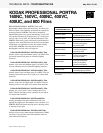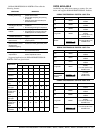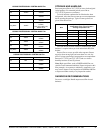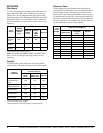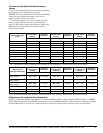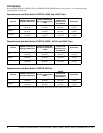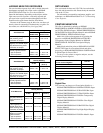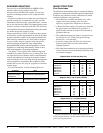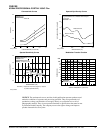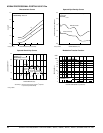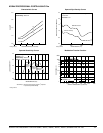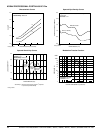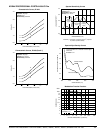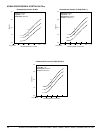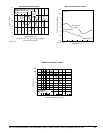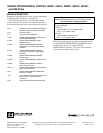
8 KODAK PROFESSIONAL PORTRA 160NC, 160VC, 400NC, 400VC, 400UC, and 800 Films • E-190
SCANNING NEGATIVES
You can easily scan PROFESSIONAL PORTRA Film
negatives with a variety of linear-array-CCD,
area-array-CCD, and PMT film scanners. You can scan
negatives on desktop scanners as well as high-end drum
scanners.
Because no standards exist to define the colored filter sets
that film scanners use to capture the red, green, and blue
information of the film image, each manufacturer’s scanner
has its own characteristic output. The output depends on the
scanner’s sensitivity to the dyes in the film. This sensitivity
is determined by the spectral distribution of the colored filter
sets and/or the spectral sensitivity of the
charge-coupled-device (CCD). In addition to these spectral
specifications, scanner output depends on the look-up tables
or matrices that the scanner uses to output information for
CRT monitors, transmission, etc. These tables or matrices
are part of either “plug-in” programs used with specific
software packages designed for image manipulation,
updateable ROMs included with the equipment, or fixed
algorithms for calibrating and balancing, similar to those
used in photographic color printing equipment.
The generic “color negative film” channel designation
available with scanner software is only a starting point. You
can adjust the final color balance and the scene-dependent
contrast and brightness of an image by using the scanner’s
controls during pre-scan, or by using an image-manipulation
software program or workstation after acquisition. Some
scanners allow you to use “plug-in” programs to customize
scanner setups.
For more information, visit the following Web sites.
To access Go to
Film Terms for KODAK
PHOTO CD Imaging
Workstations
www.kodak.com/go/pcdFilmTerms
Drivers for KODAK Film
Scanners
www.kodak.com/go/scannerDrivers
IMAGE STRUCTURE
Print Grain Index
The Print Grain Index number refers to a method of defining
graininess in a print made with diffuse-printing illumination.
It replaces rms granularity and has a different scale which
cannot be compared to rms granularity.
• The method uses a uniform perceptual scale, with a
change of four units equaling a just noticeable
difference in graininess to 90 percent of observers.
• A Print Grain Index rating of 25 on the scale represents
the approximate visual threshold for graininess. A
higher number indicates an increase in the amount of
graininess observed.
• The standardized inspection (print-to-viewer) distance
for all print sizes is 14 inches, the typical viewing
distance for a 4 x 6-inch print.
• In practice, larger prints will likely be viewed from
distances greater than 14 inches, which reduces
apparent graininess.
• Print Grain Index numbers may not represent graininess
observed from more specular printing illuminants, such
as condenser enlargers.
Negative Size: 24 x 36 mm (Size 135)
Negative Size: 6 x 6 cm (Size 120/220)
Negative Size: 4 x 5 Inches (Sheets)
For more information, see KODAK Publication No.
E-58, Print Grain Index—An Assessment of Print Graininess
from Color Negative Films.
Print Size in inches 4x6 8x10 16x20
Magnification 4.4X 8.8X 17.8X
Print Grain Index for—
160NC Film
160VC Film
400NC Film
400VC Film
400UC Film
800 Film
36
40
44
48
40
50
58
62
66
70
62
72
87
91
96
99
92
101
Print Size in inches 4x6 8x10 16x20
Magnification 2.6X 4.4X 8.8X
Print Grain Index for—
160NC Film
160VC Film
400NC Film
400VC Film
400UC Film
800 Film
Less than 25
28
32
36
28
38
36
40
44
48
40
50
58
62
66
70
62
72
Print Size in inches 4x6 8x10 16x20
Magnification 1.2X 2.1X 4.2X
Print Grain Index for—
160NC Film
160VC Film
400NC Film
Less than 25
Less than 25
Less than 25
Less than 25
Less than 25
28
35
39
43



